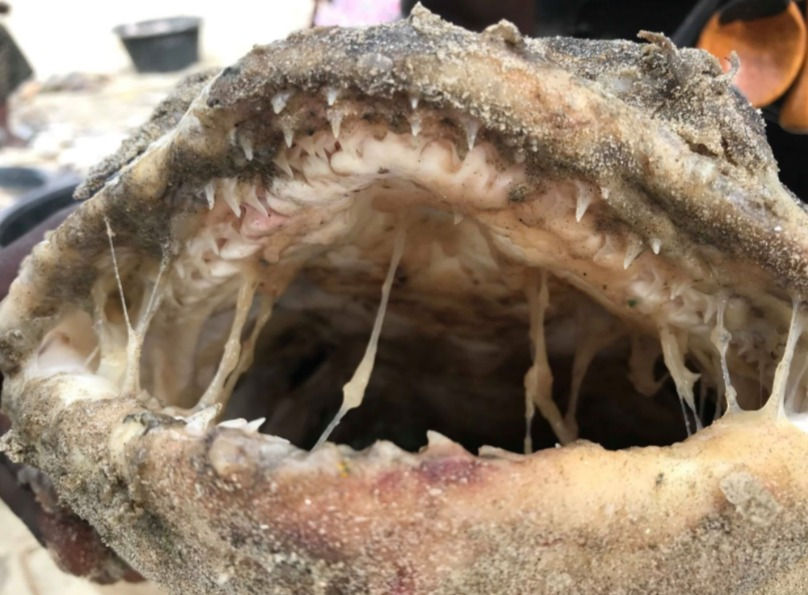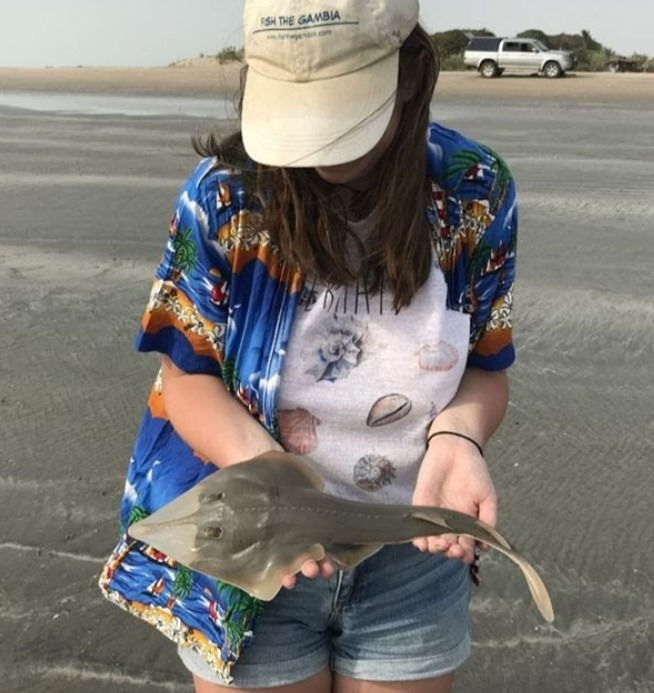
MARINE LIFE
take a look at some of our recent work
MEDITERRANEAN MONK SEALS
We’ve heard reliable reports of Mediterranean monk seals in the seas off The Gambia, approximately 700km from their nearest known site! Confirming their presence is particularly important as they are Endangered (EN) and potentially part of The Gambia’s unique marine fauna.
The Importance of fisheries in the gambia
Fish is the main supplier of animal protein in the diets of most Gambians, while fisheries and related activities are the main source of income for coastal fishing communities and support the livelihoods of an estimated 200,000 people (United Nations 2014). Apart from the human impact, the collapse of regional elasmobranch fisheries could have far-reaching biodiversity consequences, for example, Brashares et al. (2004) demonstrated increased hunting of terrestrial wildlife for bushmeat in years of poor fish supply in West Africa.

© Guy Broome

© Guy Broome
The Importance of The Gambia to Elasmobranch conservation
West Africa has been identified as one of five global hotspots to prioritise elasmobranchs (sharks, rays, guitarfish, etc.) conservation based on species richness, endemism, and evolutionary distinctness. It is a priority region for the conservation of Critically Endangered (CR) angel sharks (Gordon et al. 2017; Stein et al. 2018). Moore et al. (2019). As well as a depletion of elasmobranch abundance, the fishery represents a risk to taxa that are almost entirely unknown, including potentially undescribed species.
the case of the missing fins
On a 2010 wet season research expedition, we found huge numbers of sharks on drying racks. Most of them were milk sharks (Rhizoprionodon acutus), but amongst the hundreds present on each rack, we also found the Critically Endangered (CR) scalloped hammerhead (Sphyrna lewini). While the sharks’ bodies were being dried for food, it was clear that a more lucrative market was also being served, with all of the sharks’ fins having been removed. This kickstarted our interest in the elasmobranch fisheries in The Gambia and for expert advice, we teamed up with Dr Alec Moore of the IUCN’s shark specialist group. In the decade following our findings, student groups and our team have collected data from all of the main fishing ports in The Gambia.

© Project Wild Gambia

© Project Wild Gambia
The world’s rarest animal
It soon became clear that our monitoring was vital when we found exceptionally rare species such as the sawback and smoothback angel sharks (Squatina aculeata and Squatina oculata). Both species had, at that time, only been observed once each in the whole world in the previous 15 years. But, even that was overshadowed by the finding of an anonymous-looking ray, that was photographed for ID purposes and only later identified by experts as the smalltooth stingray (Hypanus rudis). This species had only ever been seen once on the planet, more than 1000km away in Nigeria in 1870! To make things worse, the only specimen of this species (the“type specimen”) known to science was lost in 1970! In our coming trips, we will prioritise searching for this species and hopefully replacing the lost specimen.

© Jess Holdworth

© Project Wild Gambia

© Jess Holdworth
Identifying elasmobranchs is a tricky business and the taxonomy of some species groups is changing. To identify “cryptic” species i.e. those that cannot be identified by external characteristics alone, we are starting to collect DNA samples for laboratory identification. We know there are new species waiting to be described...

© Project Wild Gambia

© Project Wild Gambia
Reporting our results
In view of the importance of our research, the extreme rarity of some species and the unsustainably heavy fishing pressure, it is vital that information we collect is shared. We copy our data to DPWM and recently published much of the information in an important paper. This paper showed that there has been “fishing down the food web” i.e. as more desirable fish have disappeared, fishermen have switched to species they wouldn’t have previously caught such as rays and small elasmobranchs. Not only that, but we have demonstrated that the size distributions of some of these species have declined over the period of our studies (including the Critically Endangered (CR) black-chinned guitarfish, Glaucostegus cemiculus), strong evidence that these species are being overfished.
Value of the study approach
We are not specialists in sharks and elasmobranch fisheries, but our colleagues are. By simple training in data collection methods and recording, we have “armed” hundreds of students and participants to collect vital data. This is highlighted by Moore et al: “The core of this survey was essentially the collation of many hundreds of photographs by undergraduate students with no previous experience of elasmobranchs, yet it has provided important insights into several poorly known aspects of their diversity and fisheries in West Africa". "The study has clearly demonstrated a valuable and cost-effective approach to elasmobranch data collection in the developing world, and more broadly helped aid the call for more data on artisanal fisheries in the region (Belhabib et al. 2018).”
Project Wild Gambia are proud to offer people the unique opportunity to work on some of the world’s rarest (even undescribed!) animals and make a meaningful scientific contribution to our understanding of a vitally important ecosystem, for people and animals.
The future...
It is vital that we continue to collect data and work with other bodies to find solutions to the current, chronic over-exploitation. We will continue our search for the rarest species and through DNA methods, identify any new species present.
Very little is known about the basic biology of many of the species, but for black-chinned guitarfish, we will be trialling a new approach. We are delighted to have teamed up with Fish The Gambia who catch many guitarfish each year and return them to the sea. With them, we will record data on size, species and sex etc. as well as start a tagging programme that will allow us to look at movements, growth rates etc. All vital information if we are to stop this Critically Endangered (CR) species from going extinct.

© Project Wild Gambia

© Project Wild Gambia



